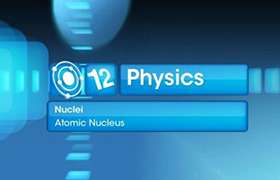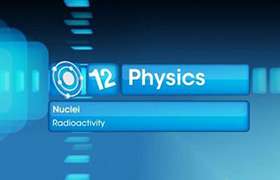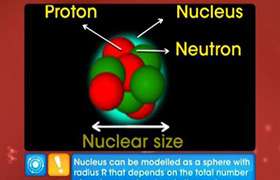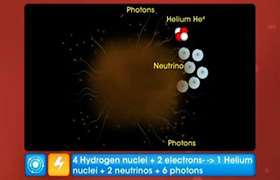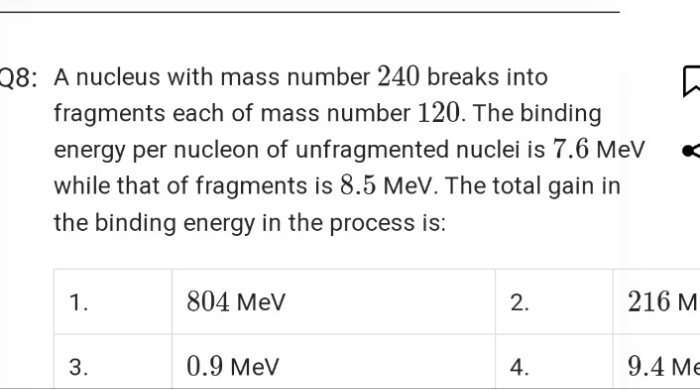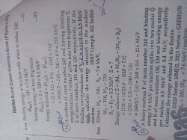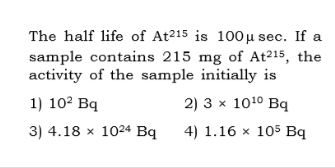CBSE Class 12-science Answered
Doubt
Asked by | 21 Mar, 2009, 11:06: AM
If the proton and neutron are part of an atomic nucleus, these decay processes transmute one chemical element into another. For example:
-
13755Cs → 13756Ba + e− + νe (beta minus decay) 2211Na → 2210Ne + e+ + νe (beta plus decay) 2211Na + e− → 2210Ne + νe (electron capture)
Beta decay does not change the number of nucleons, A, in the nucleus but changes only its charge, Z. Thus the set of all nuclides with the same A can be introduced; these isobaric nuclides may turn into each other via beta decay. Among them, several nuclides (at least one) are beta stable, because they present local minima of the mass excess: if such a nucleus has (A, Z) numbers, the neighbour nuclei (A, Z−1) and (A, Z+1) have higher mass excess and can beta decay into (A, Z), but not vice versa.
Answered by | 28 Mar, 2009, 06:25: PM
Concept Videos
CBSE 12-science - Physics
Asked by mohapatraswetalina88 | 21 Apr, 2024, 12:18: PM
CBSE 12-science - Physics
Asked by rohandhawaniya17112006 | 06 Mar, 2024, 03:32: PM
CBSE 12-science - Physics
Asked by murshidibrahimkk | 08 Feb, 2024, 10:28: AM
CBSE 12-science - Physics
Asked by kailasks2007 | 28 Dec, 2023, 08:14: PM
CBSE 12-science - Physics
Asked by varma.renu9481 | 06 Mar, 2023, 05:44: PM
CBSE 12-science - Physics
Asked by arjunsah797 | 16 May, 2022, 02:17: PM
CBSE 12-science - Physics
Asked by akashjyani705 | 06 Mar, 2022, 04:39: PM
CBSE 12-science - Physics
Asked by sharonashoksp | 27 Jun, 2021, 02:44: PM
CBSE 12-science - Physics
Asked by gaurish6247 | 07 Apr, 2021, 05:16: PM
CBSE 12-science - Physics
Asked by merinlijo_20002 | 17 Jun, 2020, 10:05: AM

